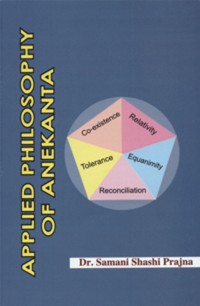The nature of reality is characterized by origination, cessation and permanence. Ācārya Kundakunda (2nd cent. CE) deals with this concept of tripadī (utpāda-vyaya-dhrauvya) by dividing it into two parts as:
- utpāda and vyaya in relation to paryāya (mode) and
- dhrauvya to dravya (substance)[1].
Here Acharya Kundakunda is explaining the identity cum difference nature of dravya and paryāya on the basis of the agamic view. There cannot be a substance without modes nor modes without a substance; they have a non-different state of relation.[2]
Here one objection can be raised as, in one and the same reality, there can't exist at a time two elements-permanence and impermanence, like cold and hot, because of being opposite to each other. For this reason, here there is a need to explain the nature of the principle of permanence of Jain philosophy in order to avoid the self-contradictory statement. Umāsvati defined the permanence as indestructibility of the essential nature of reality.[3] Ācārya Pūjyapāda opines that the permanent nature of a substance should be taken from one point of view. Ifit is permanent from all points of view, then there can be no change at all; and in that case transmigration as well as a way to salvation would become meaningless. So the tīrthañkara Mahāvīra explained to understand the permanent, and impermanent nature of the reality from different viewpoints. In the Bhagavatī Sūtra, it is explained that the non-permanent part (asthira) of a reality changes, but the permanent (sthira) does not change.[4] Moreover, tīrthañkara Mahavira elaborated this idea and said, "Souls may be eternal and may be non-eternal at the same time. They are eternal from the substantial point of view and non-eternal from the modal point of view.[5] If one accepts identity-c^im-difference in a reality from the two different standpoints, then no error can be traced by any other schools of philosophy.
 Dr. Samani Shashi Pragya
Dr. Samani Shashi Pragya

